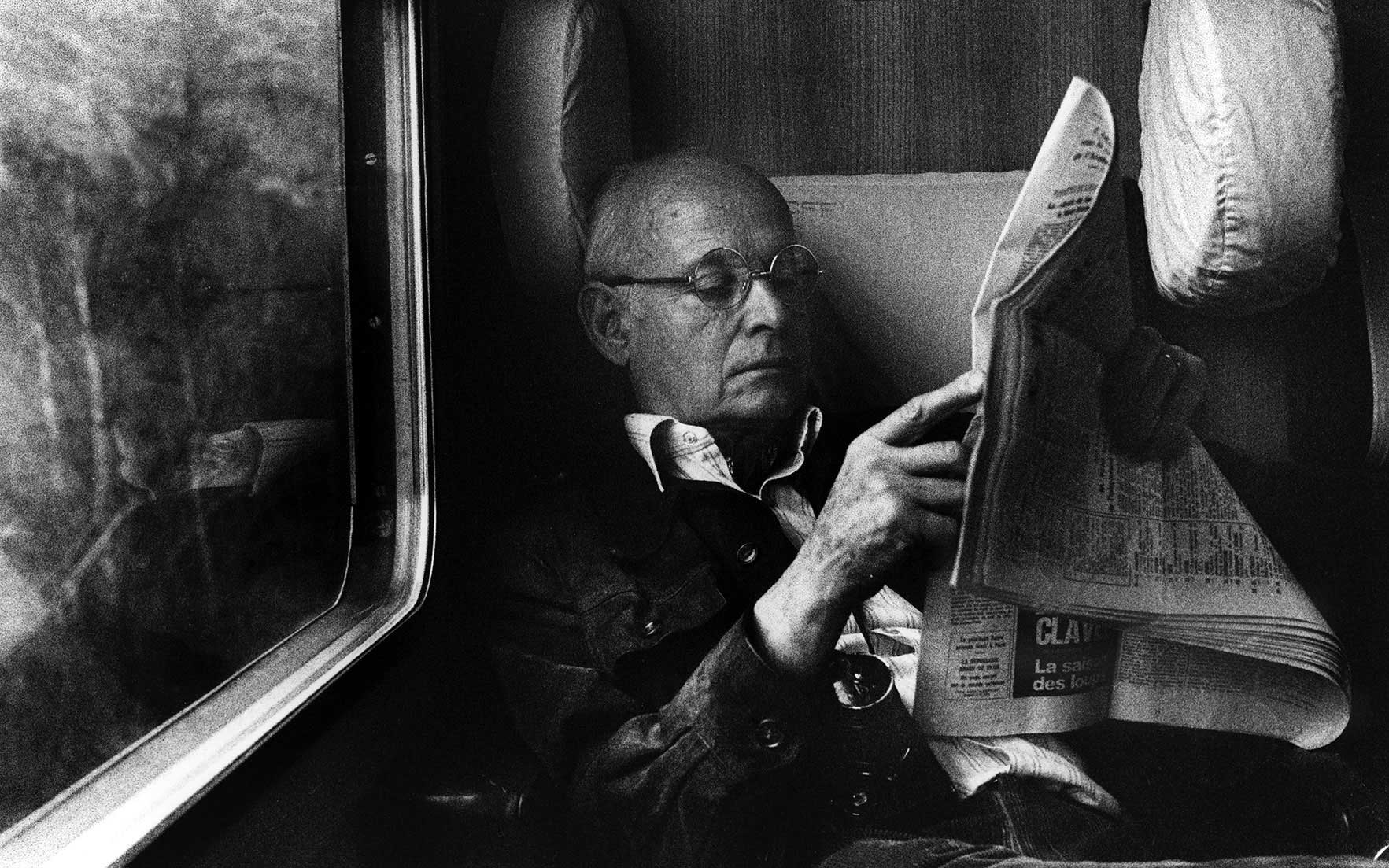The work of this French artist is far from normal. Henri Cartier-Bresson diversifies his work on topics as diverse as the Spanish Civil War and the death of Mahatma Ghandi.
Creator of a dry and epic style, he was capable of capturing the essential elements of a moment with synthesis and harmony. The greatest influence of Cartier-Bresson in the world of photography is his belief to capture the “decisive moment”; his images are loaded with patience, and, above all, unique moments that could only have been portrayed if the artist was ready to take the picture at that exact moment.

He was born in Chateloup-en-Brie, a few kilometers from Paris, France, on August 22, 1908 to a family of the upper middle class. Years later, he began studying at the Lycée Condorcet in Paris. Henri left high school to devote himself to painting, studying with Andrè Lhote between 1927 and 1928. In 1929 he went to the mandatory military service.
In 1931 he acquired his first camera, a Kodak Box Brownie, and that same year he returned to France after staying in Africa. After revealing his shots of the trip in the South African continent, he began to lose his desire to continue painting and starts to fully focus on photography.
This recognition, in real life, of a rhythm of surfaces, lines, and values is for me the essence of photography; composition should be a constant of preoccupation, being a simultaneous coalition – an organic coordination of visual elements.
After buying his first Leica Camera, he travels through Eastern Europe (Germany-Poland- Austria- Hungary, among others). In 1932 he traveled to France, Italy and Spain, and his first photographs are exhibited at the Julien Levy Gallery in New York.
In 1934 he traveled to Mexico with other committed photographers such as Andrè Pieyre de Mandiargues, in an ethnographic project carried out by the government of Mexico. During the project, he photographed people in marginal situations. His photographs were exhibited at the Palace of Fine Arts in Mexico City.
That same year, he met David Szymin, a Polish photographer and intellectual, who would later change his name to David Seymour and shortly afterwards a Hungarian photographer, Endre Friedmann, who would later be remembered as Robert Capa. Later on, he moved to New York and in 1935 made an exhibition with Walker Evans.
In 1937 he began working for several magazines and newspapers as a graphic reporter. He was called up for the French Army’s film and photography unit in 1940. During World War II he was taken prisoner by the Germans for 35 months. After three attempts, he managed to escape from a camp in Wurttemberg in 1943, heading immediately to Paris.
We must avoid however, snapping away, shooting quickly and without thought, overloading ourselves with unnecessary images that clutter our memory and diminish the clarity of the whole.
Between 1944 and 1945 he joined the group of professionals who photographed the liberation of Paris. After the war, he returned directed the film ‘Le Retour’, a documentary about the return home of prisoners of war and deportees. In 1946 he learns that the MOMA of New York intends to dedicate a “posthumous” exhibition to him, believing him dead in the war.
Bresson got in touch with the museum and spent over a year preparing the exhibition, inaugurated in 1947; the same year when he founded the famous Magnum Agency along with his colleagues.
From 1948 he traveled to India, China, Indonesia, Burma and Japan. Then in Europe and again in the USA and Mexico. In 1952, his first book came out: ‘Images à la sauvette’, better known with the English title “The Decisive Moment”.
In addition to containing a collection of some of the photographer’s best-known photos, the book describes Cartier-Bresson’s way of taking photography. The theory of the decisive instant is born: the photographer must take life by surprise, as if he were about to wake up and his images must stop the moments when the world seems to organize itself in so many flagrant crimes.
The decisive moment represents the simultaneous recognition, in a fraction of a second, of the meaning of an event as well as of the precise organization of the forms that give that event its own expression.
From 1968, two years after having left Magnum, he gradually began to reduce his photographic activity, with the only exception of portraits, to devote himself to painting. In 2000, together with his wife Martine Franck and his daughter Mélanie, he created the Henri Cartier-Bresson Foundation. Henri died in his home in Céreste (Alpes-de-Haute-Provence, France) on August 3, 2004 at the age of 95.
As far as I am concerned, taking photographs is a means of understanding which cannot be separated from other means of visual expression. It is a way of shouting, of freeing oneself, not of proving or asserting one’s own originality. It is a way of life.






